#Vitis spp.
Text



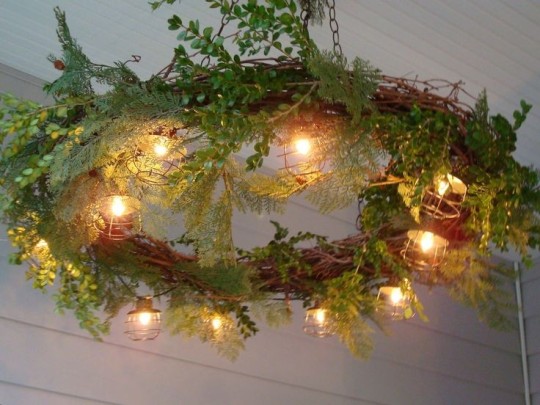





🍇 the wonderful world of grapes 🍇 seasonal foods pt. 2 (working with Gaia's bounty and medicines in food-centric herbalism)
Vitis spp. - Concord, Champagne, Sultana, Crimson Seedless, Moon Drop, Valiant, Pinot Noir, and several other varieties (including the rich wild grape varieties)...
Garden: create a whimsical space in your garden with trellises to guide the grapevines
Nourishment: fill your body with their antioxidants (bioflavonoids, polyphenols, & reversatrol) which protect cells from damage, thus protecting the integrity of your skin, eyesight, organ health (eg. heart & brain) + provides anti-inflammatory action (aiding even immunity). They also contain Vitamin A, C, K, Iron, fiber, and more.
Handicraft: utilize the vines to create rustic-style wreaths, chandeliers, baskets, and more to decorate spaces
Gustatory Enjoyment: taste their flavors as a fresh, frozen, roasted, dried (raisins), juiced, or blended; have them alone, in a salad, on a charcuterie board, in a fresh pressed juice/smoothie, in a baked or frozen treat (eg. muffins or sorbet), within breakfast foods (eg. oatmeal), as a fermented preparation (drinking or balsamic vinegars)
Flavor Pairings: rosemary, thyme, peanuts, lime, chocolate, melons, olives, black pepper, vanilla, nutmeg, star anise, plant-based cheese, sea salt, pistachios
Parts: leaves (enjoyed as 'dolmas', salad greens, lacto-fermented, dehydrated chip snacks, tea), fruit, skin (filled with antioxidants), seeds (fatty acid and antioxidant rich/carrier oil source - they're edible!), vines (decoration)
#moodboard#herbarium#grapes#Vitis spp.#holistic healing#holistic health#herbalism#nutrition#nutritarian#vegan#raw vegan#vegetarian#true nourishment#cottagecore#atmospheric airs#nourishing waves#gardening#naturecore#fitblr#leveling up#handicraft#gastronomy#wild foods#dream garden#kitchen witch#gardencore#autumn#summer#food centric herbalism#sidewalkchemistry
68 notes
·
View notes
Text
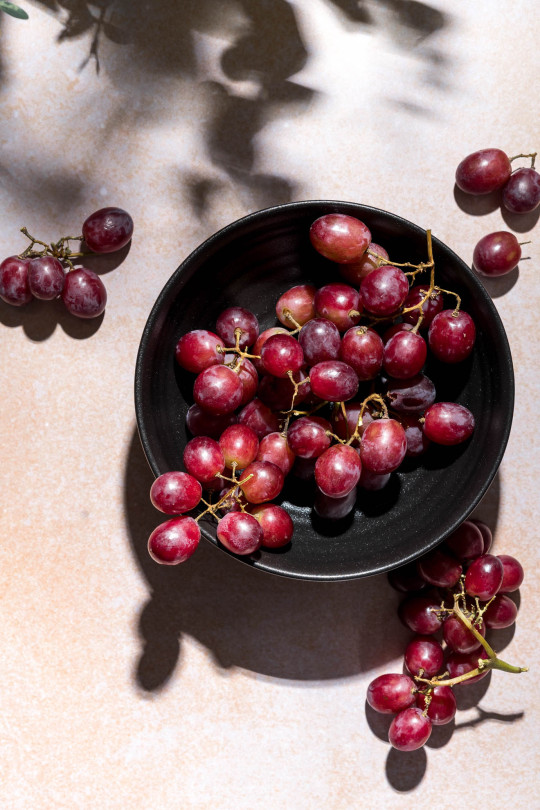
Grapes (Vitis spp.)
#grapes are just shy of a ten out of ten for me#they just miss because im not the biggest fan of them as they are. i dont have many texture issues. but i have them with grapes#so i eat them mostly frozen or as raisins#or juiced or in smoothies...any way. but not too often as they naturally are. a bit too squishy for me.#they are actually such a sweet fruit. i thought those fruit juices were oversugaring it until i made my own (too sweet for me on its own)#i think grapes are pretty likeable apart from their texture. i know that roasting grapes is another way to experience more#of its flavor profile. I've never tried that cuz i like them frozen so much. and i mostly eat my fruits fresh.#but im down to try making a recipe like that. but i just dont foresee myself preferring it that way. but isee no harm in trying it at least#more and more i like my food raw. and roasting will increase its sweetness. im not too much of a sweet tooth.#share your thoughts on grapes
2 notes
·
View notes
Text
ブドウ ヤマブドウの特徴と育て方 kaju_budou-vf013-02z
● ブドウの品種の特徴
果皮は紫黒色で、本種は主に山地などに自生する野生種の中から1本でなる(両性花を咲かせる)系統を選抜して育苗し、接木しております。酸味が強いので、生食には向きませんが、甘みが多いのでワインなどの加工用に最適です。
ぶどうは全般に暑さ寒さ、乾燥に強く、北海道から九州まで栽培できます。水はけが良く、通気性の良い土を好み、土質は選びません。棚仕立てが一般的ですが、フェンス仕立てやあんどん仕立てなど工夫次第で小さな場所でも楽しめます。棚仕立てで広く育てると1本の苗木で300房以上の収穫も可能です。手間をかければいい果実ができ、おなか一杯の収穫が待っています。
学名
Vitis spp. ブドウ科 ブドウ属
別名
やまぶどう
開花時期
5月頃
収穫時期
9月上旬 ~ 10月中旬
果実の大きさ
★☆☆☆☆小粒 豊産性あり
甘さ
★★★★★…
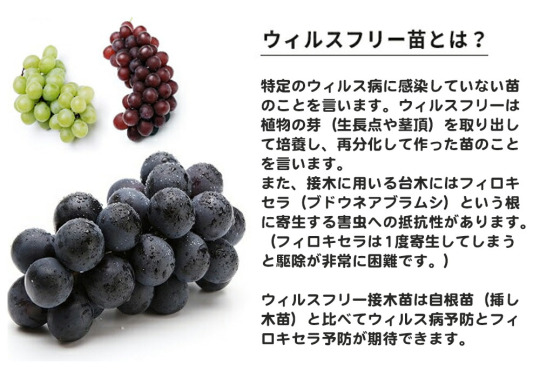
View On WordPress
0 notes
Text
Combination 1: To increase
the power of erection and
number of coitus
Taccharum munja (root), Saccharum officinarum (stem), Desmostachya bipinnata
(whole plant), Desmostachys spp., Adenia hondala (tuber), Vetiveria zizanoides
(root), Solanum surattense, Malaxis acuminata (wet stem), Malaxis muscifera (wet
stem), Sida rhombifolia (root and leaves), Polygonatum cirrhifolium, Polygonatum
vertcillatum (root stock), Fritillaria roylei (stem), Lilium polyphyllum (bulb),
Atylosia goensis (seed), Phaseolus trilobus (seed), Asparagus racemosus (tuber),
Withania somnifera (tuber), Vellooppam, Mucuna pruriens (seed), Boerhaavia
diffusa (whole plant), Coccinia grandis (root), Ipomoea paniculata (tuber),
Holostemma ada-kodien (tuber), Cassia absus (seed), Alpinia somnifera (rhizome),
Tribulus terrestris (fruit), Glycyrrhiza glabra (root), Desmodium gangeticum (root),
Phaseolus roxburghii (seed), Emblica officinalis (fruit), cow’s milk, Ficus racemosa
(fruit), Piper longum (dried spike), Scindapsus officinalis (dried spike), Vitis
vinifera (fruit), Phoenix dactylifera, Madhuca longifolia (flower), sugar, Curcuma
angustifolia (rhizome), Piper nigrum, Cinnamomum zeylanicum (bark),
Cinnamomum tamala (leaves), Elettaria cardamomum (seed), Mesua ferrea (flower)
honey
0 notes
Photo
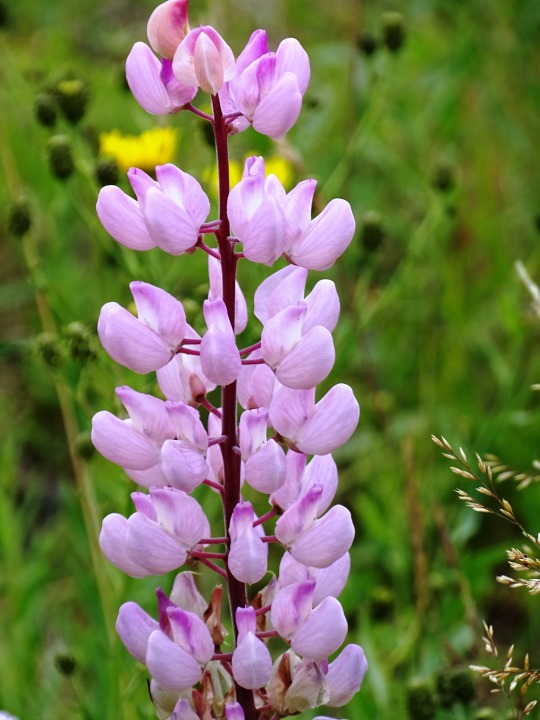



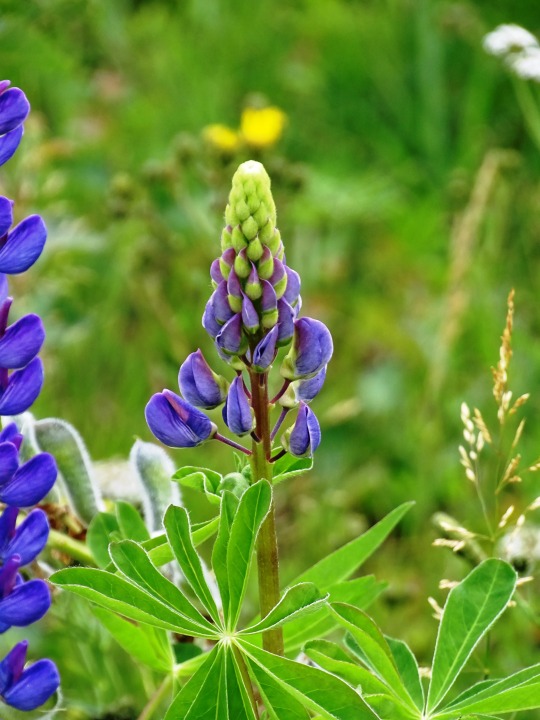




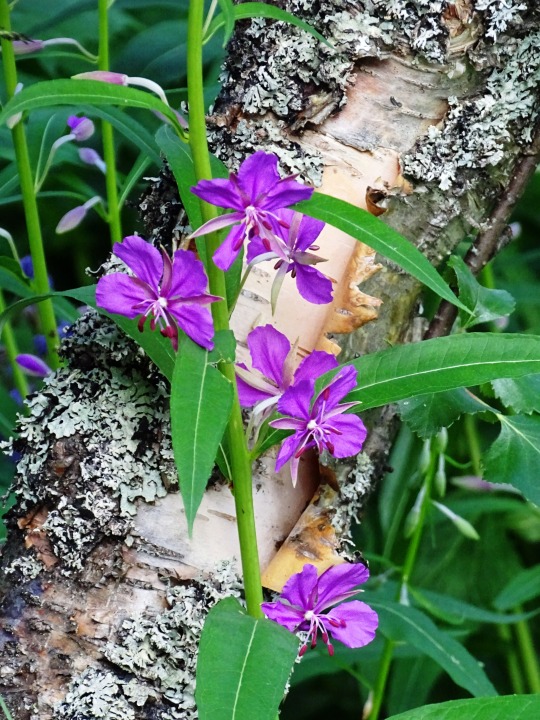
Wildflowers in Sweden
Skåne and a narrow strip along the west coast belong to the nemoral zone where beech (Fagus sylvatica) is the dominant tree species. Forest herbs in this zone commonly vegetate and flower in spring, as the crown of beech is very dense, and little light reaches the ground once the leaves appear. Examples are Anemone spp. and Corydalis spp. Oak (Quercus robur and Quercus petraea) forest occurs on poor soils. Forest of alder (Alnus glutinosa), ash (Fraxinus excelsior) and elm (Ulmus glabra) grow in nutrient-rich, often wet soil, but most of these areas have long since been drained and converted to arable fields.
Most of Sweden below the mountains is covered by conifer forest and forms part of the circumboreal zone. South of river Dalälven, there are scattered deciduous trees like oak (Quercus robur), and this zone is referred to as boreo-nemoral. North of Dalälven, in the proper boreal (taiga) zone, deciduous trees are rarer, but birches (Betula pubescens and Betula pendula) and aspen (Populus tremula) may be abundant in early successional stages, such as after fire or in recently clear-cut areas. There are a total of four native conifers in Sweden, and of these only Norway spruce (Picea abies) and Scots pine (Pinus sylvestris) form forests, in pure or mixed stands. Spruce grows wetter and pine drier, but in bogs there are often numerous dwarfed pines. Undergrowth in spruce forest is commonly almost pure stands of bilberry (Vaccinium myrtillus). In wetter types ferns (e. g. Athyrium filix-femina and Dryopteris spp.) are abundant and in richer parts herbs (e. g., Paris quadrifolia, Actaea spicata) and broad-leaved grasses (e. g. Milium effusum). In pine forest, lingonberries (Vaccinium vitis-idaea), heather (Calluna vulgaris) and/or Cladonia lichens are most common. Fires occur at irregular intervals, and usually kill all spruce and most pines. Fireweed (Epilobium angustifolium), raspberry (Rubus idaeus) and Geranium bohemicum are among the first plants to germinate in the ashes.
Source: Wikipedia
#flora#lupinus#wildflower#Northern Wolf's-bane#grass#nature#Sweden#Sverige#Scandinavia#original photography#summer 2020#travel#vacation#Northern Europe#tourism#thistle#goldenrods#birch#fireweed#countryside#close up#tree#woods#forest#Swedish Lapland
2 notes
·
View notes
Photo

This is Darapsa myron (Hog Sphinx or Virginia Creeper Sphinx). This is the third and final Darapsa species we have in the USA. Much like Darapsa choerilus that I posted, this is the brown form of the larva. This form is really stunning and makes the contrasting dorsal pattern of this larva really stick out. Darapsa myron is arguably one of the most common species of Sphingidae you encounter in the Northeast, but definitely the most common larva you find on vitaceous plants (Grape - Vitis spp., Virginia Creeper - Parthenocissus quinquefolia, Ampelopis, and others). The larvae do really well in captivity as long as you give them ample room, a bit of humidity, and ventalation. #Sphingidae #SphingidaeUSA #Darapsa #Darapsamyron #HogSphinx #VirginiaCreeperSphinx #Hawkmoths #SphinxMoths #Insects #Caterpillar #GradWork #Projects #Moth #Lepidoptera #Entomology https://www.instagram.com/p/B1_sNNzA_wQ/?igshid=107cyzcehd5zy
#sphingidae#sphingidaeusa#darapsa#darapsamyron#hogsphinx#virginiacreepersphinx#hawkmoths#sphinxmoths#insects#caterpillar#gradwork#projects#moth#lepidoptera#entomology
13 notes
·
View notes
Text
Craft your own winter container arrangement using evergreens, colorful dogwood (Cornus spp. and cvs., Zones 3–9) and willow (Salix spp. and cvs., Zones 4–9), ornamental grasses, and grapevine (Vitis spp. […] The post Midwest: December Garden To-Do List appeared first on FineGardening.

Craft your own winter container arrangement using evergreens, colorful dogwood (Cornus spp. and cvs., Zones 3–9) and willow (Salix spp. and cvs., Zones 4–9), ornamental grasses, and grapevine (Vitis spp. […] The post Midwest: December Garden To-Do List appeared first on FineGardening.
via RSSMix.com Mix ID 8135640 https://ift.tt/2P5NyhU
0 notes
Text

𝐅𝐨𝐫𝐞𝐯𝐞𝐫 𝐒𝐮𝐩𝐞𝐫𝐠𝐫𝐞𝐞𝐧𝐬
Order Now
Some days are harder than others when it comes to eating enough fruits and vegetables. When life gets in the way of your diet, you can still give your body a big boost of plant-based super
𝔻𝔼𝕊ℂℝ𝕀ℙ𝕋𝕀𝕆ℕ
Supercharge your active lifestyle with the ultimate blend of powerful greens
• Ideal blend of over 20 fruits, vegetables, superfoods and aloe
• Supports pH balance and immunity
• Supports natural energy levels and metabolism
• High in antioxidant vitamins C and E
• Vegetarian friendly
• Vegan friendly
• Gluten free
Every serving packs powerful nutrition with an ideal blend of aloe and over 20 fruits and vegetables in every stick packet. This complete superfood tastes great and mixes easily with water or your favorite drink. Forever Supergreens™ delivers key nutrients and antioxidant power to help maintain your body’s natural defenses and keep you performing at your peak. Alkalizing green veggies like spinach, kale and broccoli ramp up that performance by supporting a healthy pH balance, which is vital for many of your body’s functions.
Goji berries support healthy immunity while green tea and kale are natural metabolism kick-starters. Barley grass promotes healthy cholesterol levels while aloe vera supports healthy digestion, natural energy and nutrient absorption.
Forever Supergreens™ is more than a fast and convenient way to fill your nutritional gaps. It’s agreat addition to your gym bag too. Spirulina is a micro algae that supports muscle strength and endurance. Grape seed delivers antioxidants and promotes healthy circulation during exercise while magnesium plays an important role in post-workout muscle recovery.
Fuel your active lifestyle with nature’s best sources of green power. The delicious berries and cream flavor pairs perfectly with Forever Lite Ultra® shakes or your favorite drink. Whether you need to get your greens in on the goor power your workout with a perfect blend of nature’s top superfoods, there’s no better option than Forever Supergreens™!
These statements have not been evaluated by the Food and Drug Administration. This product is not intended to diagnose, treat, cure, or prevent any disease.
𝐈𝐧𝐠𝐫𝐞𝐝𝐢𝐞𝐧𝐭𝐬 𝐋𝐢𝐬𝐭
Proprietary Fruit & Veggie Blend Spinach Powder (Spinacia oleracea) (leaf), Broccoli Powder (Brassica oleracea var. italica) (stem and floret), Barley Grass Powder (Hordeum vulgare) (leaf), Spirulina Powder, Kale Powder (Brassica oleracea var. acephela) (leaf), Apple Powder (Malus pumila) (fruit), Sugar Beet Fiber (Beta vulgaris) (root), Rice Flour, Red Pepper Powder (Capsicum annuum) (pepper), Tomato Powder (Lycopersicon esculentum) (fruit), Strawberry Powder (Fragaria virginiana) (fruit), Cranberry Powder (Vaccinium macrocarpon) (fruit), Acerola Juice Concentrate Powder (Malpighia glabra L.) (fruit), Cabbage Powder (Brassica oleracea capitata) (head), Onion Powder (Allium cepa) (bulb), Mangosteen Powder (Garcinia mangostana L.) (whole fruit), Pumpkin Powder (Cucurbita spp.) (fruit), Beet Powder (Beta vulgaris) (root), Blueberry Powder (Vaccinium angustifolium) (fruit), Acai Juice Concentrate Powder (Euterpe oleraceae) (fruit), Goji Powder (Lycium barbarum L.) (fruit), Carrot Powder (Daucus carota ssp. sativus) (root), Grape Juice Concentrate Powder (Vitis labrusca) (fruit), Pomegranate Juice Concentrate Powder (Punica granatum) (juice). Proprietary Aloe & Antioxidant Blend Grape Powder (Vitis vinifera) (seed), Green Tea Powder (Camellia sinensis) (leaf), Lycium Extract Powder (Lycium barbarum) (fruit), Aloe Vera Juice Powder (Aloe barbadensis) (inner leaf). Maltodextrin, Gum Acacia, Natural Flavor, Silicon Dioxide, Citric Acid, Stevia and Sunflower Lecithin
0 notes
Text
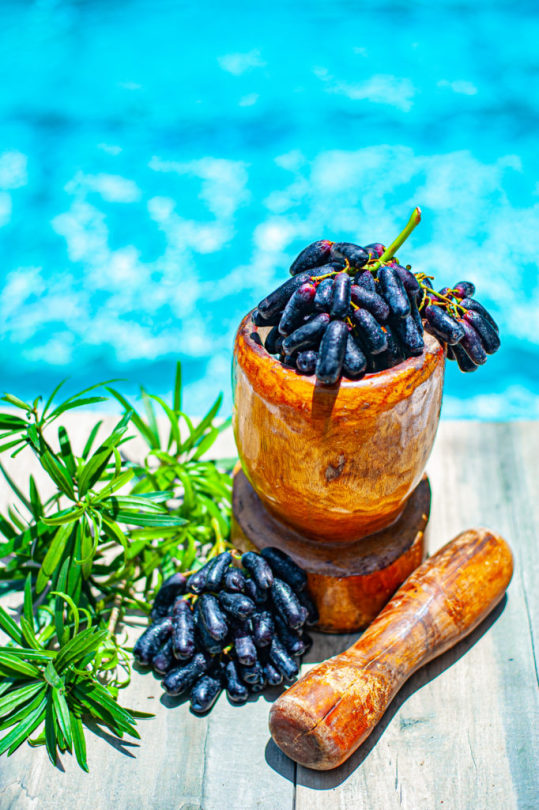
Moon Drop Grapes
3 notes
·
View notes
Text
STUDIES ON SOME ASPECTS OF ANTHRACNOSE-BLIGHT-DIEBACK COMPLEX OF CULTIVARS OF GRAPEVINES (VITIS SPP.) IN ZARIA, NIGERIA
STUDIES ON SOME ASPECTS OF ANTHRACNOSE-BLIGHT-DIEBACK COMPLEX OF CULTIVARS OF GRAPEVINES (VITIS SPP.) IN ZARIA, NIGERIA
Abstract:
Grapevine cultivation in Zaria, the hub of the production and spread in Nigeria, is threatened by diseases. Diagnostic surveys conducted in June and August, 1998, and January, 1999, to determine the important diseases for studies at the Ahmadu Bello University, Zaria,…
View On WordPress
#ANTHRACNOSE-BLIGHT-DIEBACK#BLIGHT-DIEBACK COMPLEX#GRAPEVINES (VITIS SPP.)#NIGERIA#STUDIES ON SOME ASPECTS OF ANTHRACNOSE-BLIGHT-DIEBACK COMPLEX OF CULTIVARS OF GRAPEVINES (VITIS SPP.) IN ZARIA
0 notes
Link
Công dụng Royal Placenta 500,000:
- Bổ sung nhau thai, collagen và các chất dinh dưỡng giúp làm đẹp da, gi�� ẩm cho da, hỗ trợ hạn chế lão hóa da.
- Giúp da luôn trắng sáng, căng mịn.
- Hỗ trợ cải thiện sức khỏe cho làn da và tốt cho sức khỏe tổng thể.
Đối tượng sử dụng Royal Placenta 500,000:
Người muốn cải thiện và làm đẹp làn da.
- Người có các nhược điểm về da: Da khô, nám, chảy sệ và bị lão hóa da.
- Người muốn tăng cường sức đề kháng và sức khỏe tổng thể.
Thành phần Royal Placenta 500,000:
Thành phần chính:
Chiết xuất nhau thai lợn (Sus scrofa domesticus (pig): 500.000m
Collagen cá (Tilapia spp, Oreochromis spp): 20.000mg
Chiết xuất thực vật lên men: 10.800mg
Mật ong tinh chế (Apis spp): 5.400mg
Sữa ong chúa tươi (Apis spp): 1.008mg
Chiết xuất quả lựu cô đặc (Punica Granatum): 201,60mg
Chiết xuất Tổ yến: 93,63mg
Bột chiết xuất rượu vang đỏ (Vitis Vinifera): 50,40mg
Axit hyaluronic: 50,40mg
Elas - tin: 50,40mg
Chiết xuất tinh chất hoa cúc tím (Chrysanthemum morifolium): 25,20mg
Chiết xuất sụn cá hồi (Oncorhynchus keta): 21,60mg
Chiết xuất tinh chất hoa hồng (Rosa spp): 7,20mg
Chiết xuất tinh chất hoa anh đào (Cerasus): 7,20mg
L- Cystine: 7,20mg
Coenzyme Q10: 7,20mg
Vitamin B1(Thiamine hydrochloride): 7,20mg
Vitamin B2 (riboflavin): 7,20mg
Vitamin B6 (Pyridoxine hydrochloride): 7,20mg
Vitamin B12 0,1% (Cyanocobalamin): 7,2mg
Phụ liệu: Nước, Cyclic Oligosaccarit, Siro Isomalt Oligosaccharide, Đường long galacto oligosacarit, Erythritol, hương liệu, Polysaccharide, thickener (Pectin), Axit citric, Polysac- charide thickener (Xanthan gum), Chất bảo quản (natri benzoat), Polysaccharide thicken-er (Gellan gum), chất tạo ngọt (Sucralose) và vỏ chai vừa đủ 720ml.
Trọng lượng: 720ml/chai.
Ngày sản xuất: Xem trên bao bì sản phẩm.
Hạn sử dụng: 24 tháng kể từ ngày sản xuất.
Hướng dẫn sử dụng:
Uống 20ml/ngày, pha loãng với nước khi sử dụng.
Bảo quản: Tránh ánh nắng trực tiếp để duy trì chất lượng.
Xuất xứ: Japan (Nhật Bản)
Thông tin cảnh báo:
- Không sử dụng sản phẩm khi đã hết hạn sử dụng.
- Không sử dụng cho người mẫn cảm với bất kỳ thành phần nào của sản phẩm.
- Xin vui lòng ngừng sử dụng sản phẩm và xin tư vấn bác sĩ nếu có bất kỳ phản ứng bất lợi nào xảy ra.
Cam kết của THUỐC VIỆT:
SẢN PHẨM: Thuốc Việt chỉ phân phối các sản phẩm chất lượng tốt đã được kiểm định. Nguồn gốc rõ ràng, có hóa đơn, chứng từ.
HỖ TRỢ TƯ VẤN : 0988432579 (Chính xác-Trung thực-Có chuyên môn cao)
GIAO HÀNG: Toàn quốc, miễn phí vận chuyển.
LUÔN GIÁ RẺ NHẤT TOÀN QUỐC: Là nhà phân phối, bán buôn với quy mô lớn nên chúng tôi luôn tự tin nhập được sản phẩm với giá tốt nhất để bán cho khách hàng với giá rẻ nhất toàn quốc.
Chú ý:
Sản phẩm không phải là thuốc và không có tác dụng thay thế thuốc chữa bệnh.
Mọi bình luận và đánh giá của khách hàng chỉ mang tính tham khảo, tác dụng của sản phẩm phụ thuộc cơ địa từng người.
Nguồn: Nước uống đẹp da Royal Placenta 500,000
https://ift.tt/2yD2U5Kroyal-placenta-500-000
https://ift.tt/2O03piQ https://ift.tt/2Lt9hQe
0 notes
Text
Lyonsey Professional Hair Care Oil Saç Bakım Yağı 100 ML
Lyonsey Professional Hair Care Oil Saç Bakım Yağı 100 ML
Lyonsey Professional Hair Care Oil Saç Bakım Yağı 100 ML Lyonsey Professional Hair Care Oil Saç Bakım Yağı Kaç ML ?
Lyonsey Professional Hair Care Oil Saç Bakım Yağı 100 ML
Lyonsey Professional Hair Care Oil Saç Bakım Yağı Üretici Firma Adı
Yeni Mis Kozmetik
Lyonsey Professional Hair Care Oil Saç Bakım Yağı Ürün Barkod Numarası
8680603249284
Lyonsey Professional Hair Care Oil Saç Bakım Yağı…
View On WordPress
0 notes
Photo
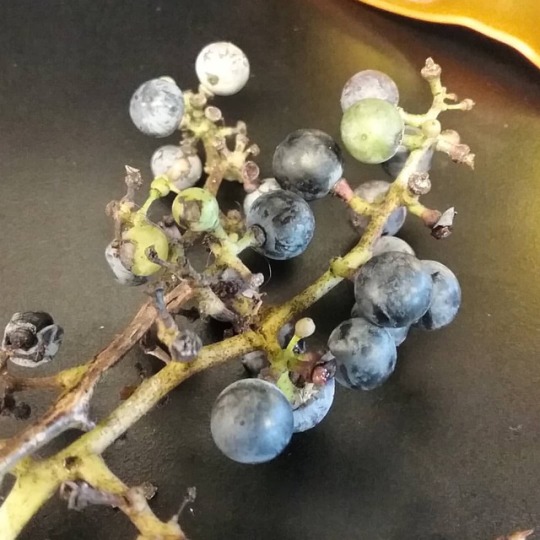
Wild grapes make a lovely after-trail-run snack 👌😊(as long as you can tell the difference between deadly look-alikes 💀) Wild grapes, Vitis spp., In the Vitaceae family) #foraging #trailrunning #wildgrapes #grapes #vitis #vitaceae (at University At Albany) https://www.instagram.com/p/Bn6MWZUBw_J/?utm_source=ig_tumblr_share&igshid=1rgy5uq926cp3
0 notes
Text
Popillia Japonica: un nuovo nemico per giardini e coltivazioni
Popillia japonica: dietro questo nome innocuo, quasi simpatico, si nasconde una minaccia per i nostri giardini e per le coltivazioni. Questo piccolo insetto originario del Giappone è stato inserito tra le specie da quarantena, a causa della voracità con cui attacca le piante e soprattutto le loro foglie, conferendogli un caratteristico aspetto “scheletrico” e impedendogli di portare a maturazione i frutti.
L’insetto è stato rinvenuto per la prima volta nell'estate 2014 nel Parco del Ticino su entrambe le sponde, lombarda e piemontese, probabilmente arrivato dagli aeroporti di Cameri o di Malpensa. Questo insetto è facilmente confondibile con i nostri innocui maggiolini, che riempiono i prati durante le sere d’estate, anche se più piccolo e di un caratteristico verde acceso.
A causa della sua natura infestante e dannosa per l’economia agricola, il Servizio Fitosanitario ora è attivamente impegnato nel controllo dell’insetto, per evitare la sua diffusione su tutto il territorio nazionale.

Cosa fare se si trova la Popillia Japonica in orti e giardini?
In presenza di individui isolati il Servizio Fitosanitario consiglia di raccoglierli manualmente e annegarli in una soluzione di acqua e sapone. Se gli individui iniziano a farsi più numerosi, si è purtroppo di fronte a un’infestazione, ed è preferibile intervenire con prodotti a base di deltametrina o zeta-cipermetrina, di facile reperibilità e disponibili anche per uso non professionale.
Nonostante questi composti siano sicuri per piante ornamentali e ortaggi, si può ricorrere anche all’uso temporaneo di reti antinsetto che garantiscono una protezione totale, alternativa agli insetticidi.
Le specie di piante più sensibili alla Popillia Japonica
Occorre prestare attenzione soprattutto a questo tipo di piante, di cui la Popillia è particolarmente ghiotta:
Tiglio -Tilia spp.
Ciliegio - Prunus avium
Pesco - Prunus persica
Amolo - Prunus pissardii
Olmo - Ulmus spp.
Salice - Salix spp.
Platano - Platanus spp.
Pioppo nero - Populus nigra
Ontano nero - Alnus glutinosa
Albicocco - Prunus armeniaca
Susino - Prunus domestica
Biancospino - Crataegus monogyna
Prugnolo - Prunus spinosa
Glicine - Wisteria sinensis
Vite americana - Parthenocissus spp.
Vite - Vitis vinifera
Rovo - Rubus spp.
Rosa - Rosa spp.
Luppolo - Humulus lupulus
Mirtillo - Vaccinium spp.
Nocciolo - Corylus avellana
Il trattamento del terreno
È anche possibile contattare vivaisti e giardinieri esperti, per trattare il terreno dove sono presenti uova e larve dell’insetto, attraverso la distribuzione nei prati di un prodotto a base di un fungo entomopatogeno, il Metarhizium anisopliae, durante la primavera o l’autunno. Nel periodo estivo, invece, si sono rivelati efficaci i nematodi entomoparassiti della specie Heterorhabditis bacteriophora sembrano essere i più efficaci tra i nematodi attualmente disponibili.
Le trappole territoriali
Come negli anni precedenti, da quando cioè nel 2014 il coleottero di origine giapponese è stato ritrovato in Nord Italia, il Servizio Fitosanitario di Lombardia e Piemonte si sono attivati per monitorare le popolazioni dell'insetto e controllarne la diffusione, collocando delle trappole che attraggono e catturano un gran numero di adulti del coleottero, sia maschi che femmine.
"Quest'anno la strategia di controllo” ha detto Fabio Rolfi, assessore regionale lombardo all'Agricoltura, Alimentazione e Sistemi verdi “prevede anche l'utilizzo di un nuovo tipo di trappola. Si tratta di una struttura formata da un treppiede ricoperto da una rete. Gli insetti vengono attirati verso la trappola dall'attrattivo posizionato al centro del treppiedi e vengono intercettati dalla rete. Il contatto degli adulti di Popillia japonica con la rete consente l'assorbimento di minime quantità di insetticida di cui è intrisa”.
"Per l'utilizzo di questo tipo di trappola i Servizi fitosanitari di Lombardia e Piemonte - ha sottolineato Rolfi - hanno chiesto e ottenuto una particolare autorizzazione dai ministeri della salute, dell'ambiente e dell'agricoltura".
Non rubare le trappole!
Entrambi i tipi di trappola visti sopra sono strumenti molto efficaci, ma devono essere utilizzati esclusivamente nell'ambito di strategie territoriali. Il loro potere di attrazione è superiore alla capacità di cattura: se a qualcuno venisse in mente di rubarne una e collocarla nel proprio orto o giardino richiamerebbe insetti da centinaia di metri con la conseguenza di aumentare notevolmente i danni!
0 notes
Text
Внимание! Карантинное заболевание - бактериальное увядание винограда. — Феодосия
Внимание! Карантинное заболевание - бактериальное увядание винограда. — Феодосия
#intavrida #новостикрыма #феодосия
Бактериальное увядание винограда (Xylophilus ampelinus (Panagopoulos) Willrms et al) – согласно приказа Минсельхоза Российской Федерации от 15.12.2014 №501 включено в перечень карантинных объектов, отсутствующих на территории Российской Федерации.
Службой по земельному и фитосанитарному надзору Республики Крым приказом от 21.08.2017 года № 747/П, на землях Ровненского сельского поселения Красногвардейского района Республики Крым, введен карантинный фитосанитарный режим и установлена карантинная фитосанитарная зона по бактериальному увяданию винограда на общей площади – 233,0 га.
Бактериальное увядание винограда широко распространено в Греции, Италии, Молдове, Словении, Франции, ЮАР. Бактерия поражает исключительно виноград (Vitis vinifera, а также Vitis spp., используемые в качестве подвоя). Болезнь приводит к значительному снижению урожая до 80 % и сокращению долговечности виноградников. Возбудитель болезни поражает все части растения: побеги, листья, соцветия, гроздья, рукава и штамбы. Особенно чётко заболевание проявляется в годы с холодной и влажной весной. Первые симптомы обнаруживаются на побегах лозы первого и второго года. Замедляя её рост, почки у основания побегов не распускаются, а верхние дают побеги с уродливыми, морщинистыми и хлоротичными. Листья могут быть заражены путем распространения инфекции по черешкам и жилкам, в этом случае целый лист погибает. При проникновении инфекции через устьица на листьях образуются мелкие красновато-коричневые пятна. При высокой влажности воздуха на листьях выделается ярко-желтая слизь (бактериальный экссудат). Зараженные цветки, не распускаясь, чернеют и увядают. Бактерия способна сохранять жизнеспособность в древесине и может распространяться от растения к растению зараженными инструментами при обрезке.
Бактериальное увядание – сосудистое заболевание. Бактерии вызывают разрушение клеточных стенок растения и образуют камедь сначала прозрачного цвета, а затем тёмного цвета, которая закупоривает сосуды, На поперечном срезе поражённого побега можно заметить потемневшую ткань красно-коричневой окраски. Через раны и трещины камедь просачивается наружу. В зоне распространения болезни возбудитель может быть занесён на виноградник заражёнными черенками, во время обрезки, сбора урожая, прикрытия лоз землёй. Сильнее бактериальное увядание проявляется на кремнеземных почвах и на участках, где застаивается вода. Заморозки, влажная и холодная весна способствуют вспышке инфекции. В засушливые годы заболевание проявляется слабо или протекает в скрытой форме. Бороться с заболеванием очень сложно, заражённую лозу надо уничтожать. Для предотвращения заражения рекомендуются профилактические обработки медьсодержащими препаратами. Распространение карантинного объекта на территории Российской Федерации может привести к большим экономическим потерям в зонах выращивания винограда. На территорию Республики Крым болезнь может быть завезена с посадочным материалом. В целях своевременного выявления карантинных объектов, включенных в перечень, утвержденный Приказом Минсельхоза РФ от 15.12.2014
№ 501, определения границ их очагов, подкарантинные объекты подлежат систематическому карантинному фитосанитарному обследованию. В связи с этим, Служба по земельному и фитосанитарному надзору Республики Крым, обращает внимание граждан, юридических лиц и индивидуальных предпринимателей на необходимость проведения систематических карантинных фитосанитарных обследований в соответствии с Приказом Министерства сельского хозяйства Российской Федерации от 22.04.2009 г. № 160 «Об утверждении Правил проведения карантинных фитосанитарных обследований».
С целью выявления и предотвращения распространения на территории Республики Крым при обнаружении признаков, указывающих на наличие бактериального увядания винограда, владельцы, пользователи подкарантинных объектов, для оперативного оповещения немедленно должны обратиться на «горячую линию» Крымсельхознадзора по адресу: г. Симферополь, пер. Тихий, 6. тел/факс: (3652) 27-53-66, адрес эл. почты: [email protected].
Источник
Источник: https://intavrida.ru/official/mo/feodosiya/vnimanie-karantinnoe-zabolevanie-bakterialnoe-uvyadanie-vinograda-feodosiya/
0 notes
Text
Forest Gardening – The Agroforestry Research Trust
A Forest Garden is a designed agronomic system based on trees, shrubs and perennial plants. These are mixed in such a way as to mimic the structure of a natural forest – the most stable and sustainable type of ecosystem in this climate.
The primary aims for the system are:
You're reading: Forest Gardening – The Agroforestry Research Trust
To be biologically sustainable, able to cope with disturbances such as climate change
To be productive, yielding a number (often large) of different products
To require low maintenance.
The crops which are produced will often include fruits, nuts, edible leaves, spices, medicinal plant products, poles, fibres for tying, basketry materials, honey, fuelwood, fodder, mulches, game, sap products. Forest gardens (often called home gardens) have been used for millennia in tropical regions, where they still often form a major part of the food producing systems which people rely on, even if they work elsewhere for much of the time. They may also provide useful sources of extra income. They are usually small in area, often 0.1-1 hectares (+61404532026 acres).
In temperate regions, forest gardens are a more recent innovation, over the last 30 years. A major limiting factor for temperate forest gardens in the amount of sunlight available to the lower layers of the garden: in tropical regions, the strong light conditions allow even understorey layers to receive substantial light, whereas in temperate regions this is not usually the case. To compensate for this, understorey layers in temperate forest gardens must be chosen very carefully.
Read more: One Thing I Wish Someone Told Me Before I Started a Succulent Garden
There are plenty of plant crops which tolerate shady conditions, but many are not well known. Many of the more common shrub or perennial crops need bright conditions, and it may be necessary to design in more open clearings or glades for such species. Temperate forest gardens are also usually small in area, from tiny back garden areas up to a hectare (2.5 acres) in size.
The key features which contribute to the stability and self-sustaining nature of this system are:
The large number of species used, giving great diversity.
The careful inclusion of plants which increase fertility, such as nitrogen fixers (eg. Alders [Alnus spp], Broom [Cytisus scoparius], Elaeagnus spp, and shrub lupins [Lupinus arboreus]).
The use of dynamic accumulators – deep rooting plants which can tap mineral sources deep in the subsoil and raise them into the topsoil layer where they become available to other plants, eg. Coltsfoot [Petasites spp], Comfreys [Symphytum spp], Liquorice [Glycyrrhiza spp], Sorrel (and docks!) [Rumex spp].
The use of plants specially chosen for their ability to attract predators of common pests, eg umbellifers like tansy.
The use, where possible, of pest and disease resistant varieties, eg. apples.
The increasing role of tree cover and leaf litter which improve nutrient cycling and drought resistance.
There is an excellent free app called Ticl (smart phone and web based) which allows you to walk around a garden with a smart phone and it will describe the plants nearest to you – or you can locate specific plants using a direction-finder. Online you can see a zoom-able map of the garden with location points marked on. If you visit the garden with a smart phone you can use Ticl to help identify what is growing!
Click here to see the ART forest garden. You need to log in to see all the plant points.
Designing in Layers
A forest garden is organised in up to seven ‘layers’ . Within these, the positioning of species depends on many variables, including their requirements for shelter, light, moisture, good/bad companions, mineral requirements, pollination, pest-protection, etc. The layers consist of:
Canopy Trees
– the highest layer of trees. May include species such as Chestnuts [Castanea spp], Persimmons [Diospyros virginiana], honey locusts [Gleditsia triacanthos], Strawberry trees [Arbutus spp], Siberian pea trees [Caragana arborescens] Cornelian cherries [Cornus mas], Azeroles and other hawthorn family fruits [Crataegus spp], Quinces [Cydonia oblonga], Apples [Malus spp], Medlars [Mespilus germanica], Mulberries [Morus spp], Plums [Prunus domestica], Pears [Pyrus communis], highbush cranberries [Viburnum trilobum].
Small trees and large shrubs
– mostly planted between and below the canopy trees. May includes some of the canopy species on dwarfing rootstocks, and others such as various bamboos, Serviceberries [Amelanchier spp], Plum yews [Cephalotaxus spp], Chinkapins [Castanea pumila], Elaeagnus spp, and Japanese peppers [Zanthoxylum spp]. Others may be trees which will be coppiced to keep them shrubby, like medicinal Eucalyptus spp, and beech [Fagus sylvatica] and limes [Tilia spp] with edible leaves.
Shrubs
– mostly quite shade tolerant. May include common species like currants [Ribes spp] and berries [Rubus spp], plus others like chokeberries [Aronia spp], barberries [Berberis spp], Chinese dogwood [Cornus kousa chinensis], Oregon grapes [Mahonia spp], New Zealand flax [Phormium tenax] and Japanese bitter oranges [Poncirus trifoliata].
Read more: Sauteed Garden Fresh Green Beans
Herbaceous perennials
– several of which are herbs and will also contribute to the ground cover layer by self-seeding or spreading. These may include Bellflowers with edible leaves [Campanula spp], Comfreys [Symphytum spp], Balm [Melissa officinalis], Mints [Mentha spp], Sage [Salvia officinalis], and Tansy [Tanacetum vulgare].
Ground covers
– mostly creeping carpeting plants which will form a living mulch for the ‘forest floor’. Some may be herbaceous perennials (see above), others include wild gingers [Asarum spp], cornels [Cornus canadensis], Gaultheria spp, and carpeting brambles (eg. Rubus calycinoides & R.tricolor).
Climbers and vines
– These are generally late additions to the garden, since they obviously need sturdy trees to climb up. They may include hardy kiwis [Actinidia spp], and grapes [Vitis spp].
Rhizosphere
– Any design should take account of different rooting habits and requirements of different species, even if root crops are not grown much. Some perennials with useful roots include liquorice [Glycyrrhiza spp] and the barberries [Berberis spp] whose roots furnish a good dye and medicinal products. Various beneficial fungi can also be introduced into this layer.
A long-term biologically sustainable system for growing food & other products for a household, school, community group etc.
Once established, little work is needed to maintain.
Planting out and establishment usually requires large numbers of plants and substantial work.
Source: https://livingcorner.com.au
Category: Garden
source https://livingcorner.com.au/forest-gardening-the-agroforestry-research-trust/
1 note
·
View note